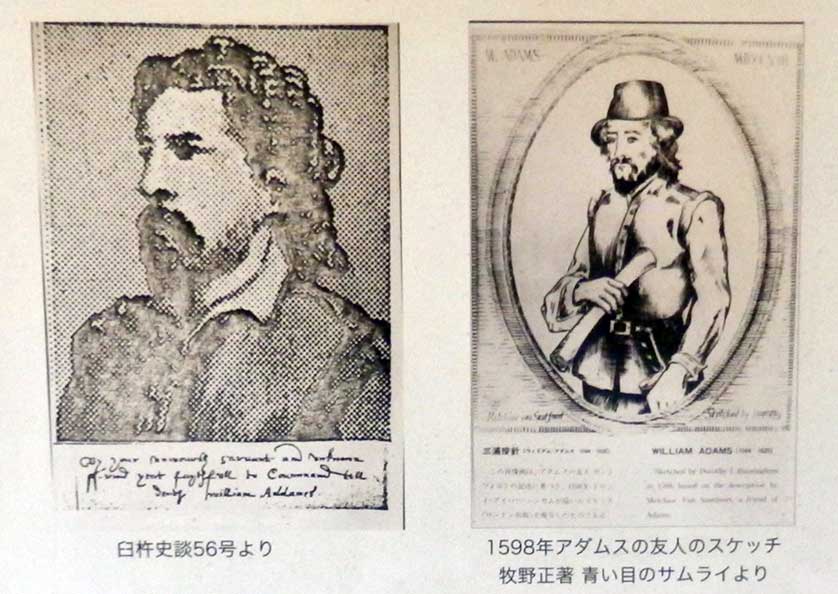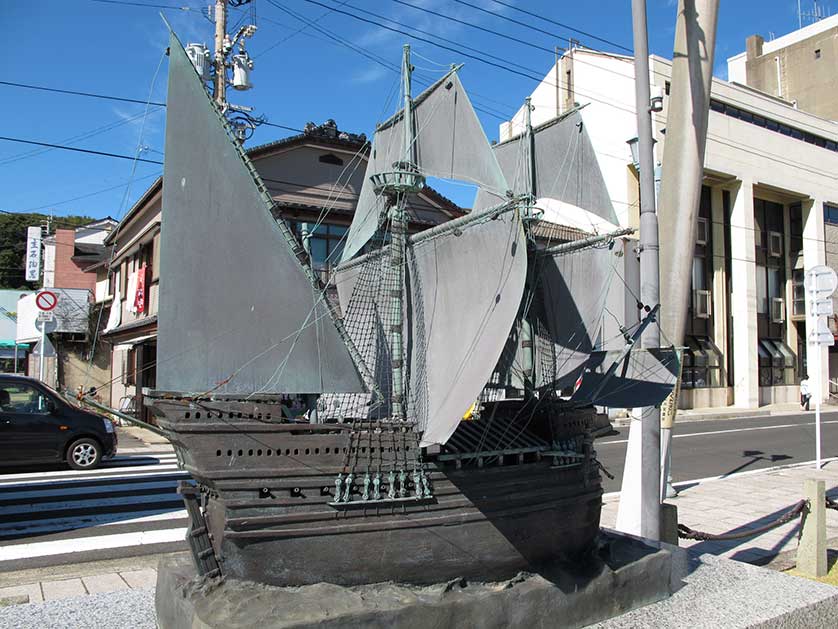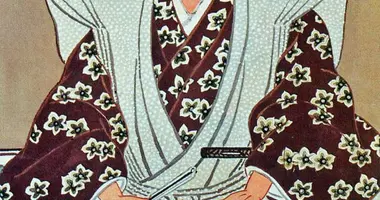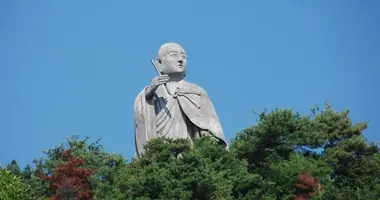William Adams: The First Englishman to Reach Japan and Become a Samurai
Read a biography of William Adams, the English seafarer and samurai of the Edo Period. Adams became an adviser to shogun Ieyasu Tokugawa.
Early life and career in England
William Adams was born in Gillingham, Kent, England in 1564. At the age of 12, he started working as an apprentice in a shipyard in Limehouse, London. Over the next 12 years, Adams studied shipbuilding, astronomy, and navigation before joining the Royal Navy. With England at war with Spain, he served under Sir Francis Drake and saw action against the Spanish Armada in 1588 as master of the resupply ship Richarde Dyffylde.
After the war, Adams became a pilot for the Barbary Company, a trading company established by Queen Elizabeth I. During this time, Jesuit sources claim he took part in a two-year Arctic expedition in search of a Northeast Passage to the Far East along the coast of Siberia, though Adams himself never mentioned this voyage in his own writings.
Expedition to the Far East with the Dutch East India Company
In 1598, at the age of 34, Adams was hired as pilot major for a five-ship Dutch fleet heading to the Far East. The expedition was organized by a company of Rotterdam merchants, a voorcompagnie (predecessor of the Dutch East India Company). His brother Thomas accompanied him on the voyage.
The fleet's original plan was to sail to the west coast of South America to trade for silver, only heading to Japan if that mission failed. They aimed to obtain silver in Japan to then buy spices in the Moluccas before returning to Europe. However, the journey was plagued by disasters. After rounding the Strait of Magellan and reaching the Pacific in September 1599, the ships were scattered by a storm. Only the Liefde, with Adams on board, managed to reach Japan—over a year later in April 1600.

Arrival in Japan and meeting with Tokugawa Ieyasu
On April 19, 1600, the Liefde made landfall off Bungo Province (present-day Usuki, Oita) on Japan's southern island of Kyushu with only 23 surviving crew members, many of them sick and dying. The ship was seized and the crew imprisoned at Osaka Castle on orders from Tokugawa Ieyasu, the powerful daimyo (feudal lord) who would soon become shogun.
Adams was summoned to meet with Ieyasu, who was impressed by the Englishman's knowledge of ships, shipbuilding and navigation. Through an interpreter, Ieyasu questioned Adams about his home country and purpose in coming to Japan. Seeing an opportunity to gain Ieyasu's favor, Adams showed him a world map and emphasized England's desire for friendship and trade with all Asian nations. He also explained they had reached Japan by way of the Strait of Magellan, amazing Ieyasu.
Despite Portuguese Jesuits urging the Japanese authorities to execute the Protestant newcomers as pirates, Ieyasu denied their request, declaring that Adams and his shipmates had done no harm to Japan or its people. He ordered the sickly crew to sail the Liefde from Bungo to Edo (modern-day Tokyo) where the ship, damaged beyond repair, eventually sank.
Becoming a key advisor to the shogun and directing construction of Western-style ships
After meeting Adams, Ieyasu recognized his usefulness and made him a trusted advisor on Western technology and international affairs. In 1604, the shogun ordered Adams and his shipmates to help build Japan's first Western-style ship. An 80-ton vessel was constructed in Ito on the Izu Peninsula, used to survey Japan's coast. A larger 120-ton ship, the San Buena Ventura, was completed the following year.
Adams supervised the construction and piqued Ieyasu's interest by explaining European shipbuilding methods. The shogun invited Adams to visit his court whenever he liked, and "always come into his presence." Other surviving Liefde crewmen were also rewarded and allowed to engage in overseas trade on behalf of the shogunate.
Facilitating the establishment of Dutch and English trading factories in Japan
Through Adams' influence, Ieyasu opened up Japan to Western trade. In 1609, the Englishman helped facilitate the establishment of a Dutch trading post on the island of Hirado off Kyushu. He negotiated on behalf of Dutch representatives to allow them to engage in trade throughout Japan under Ieyasu's protection.
Similarly, in 1613, Adams assisted in setting up an English factory for the British East India Company in Hirado. He secured broad trading privileges for the English from Ieyasu, on par with the Dutch. However, Adams advised against making Hirado the English trading base, arguing it was too remote from major markets like Osaka and Edo. He recommended Uraga near Edo instead, but was overruled.
Involvement in Japan's Red Seal Asian trade as captain of expeditions to Southeast Asia
Ieyasu presented William Adams with the two swords of a samurai and bestowed upon him the prestigious title of hatamoto, a direct retainer of the shogun. With this status, he granted Adams' request for a Red Seal permit allowing him to engage in overseas trade on behalf of the shogunate.
From 1614-1619, Adams led a series of trading voyages throughout Southeast Asia as captain of Red Seal ships. He made several expeditions to Siam (Thailand) in 1616 to purchase raw silk, sappanwood and deerskins, returning with rich cargoes that netted handsome profits. In 1617 and 1618, Adams sailed to Cochinchina (Vietnam), chartering ships and transporting goods for both the shogunate and his own personal gain.
Rising to samurai status and receiving honors from the shogun
Having become one of Ieyasu's most trusted advisors, William Adams was elevated even further in 1608 when the shogun renamed him Miura Anjin and presented him with a noble title and lands. "Anjin" was a contraction of the word "pilot" while "Miura" came from the name of the estate bestowed on him in Hemi (modern-day Yokosuka).
This made Adams the first of very few Westerners to ever become a samurai. He was granted servants and an income of 250 koku (a substantial stipend). Though the shogun forbade him from leaving Japan, he provided generously for Adams, declaring "I must always come in his presence."
Adams also took the Japanese name of Miura Anjin and married Oyuki, the daughter of a highway official, with whom he had a son Joseph and a daughter Susanna. He even had a mansion in Edo, where the shogun could call upon his counsel as desired. That neighborhood is still known as Anjin-cho (Pilot district) today.

Model of a sailing ship in Hirado, Nagasaki Prefecture, Kyushu
Legacy and influence as one of the most prominent foreigners in Japan during this period
William Adams lived out the rest of his life as a foreign samurai in Japan until his death in 1620 at Hirado, age 55. Through his close relationship with shogun Tokugawa Ieyasu, he played an instrumental role in opening Japan up to Western trade and influences in the early 1600s.
As Ieyasu's trusted advisor, Adams helped establish the Dutch and English trading factories that broke the Portuguese monopoly on Japanese trade. He built some of the first Western-style ships in Japan and taught European navigation techniques. On his Red Seal voyages, Adams charted new Japanese trade routes and contacts in Southeast Asia. He even wrote letters on behalf of Ieyasu encouraging the English and Dutch to come and trade in Japan.
After his death, Adams' children by his Japanese wife carried on his noble samurai status and stipend. His legacy lived on through the success of the Dutch and English trading posts he helped establish as well as Japan's growing forays into Western-style shipbuilding and navigation. Though Adams' story faded into obscurity in Japan for many years, he has been recognized more recently as one of the most influential foreigners in the country during the early Edo Period.
His life story inspired the 1975 James Clavell novel Shogun and its popular TV miniseries adaptation. Today, there are memorials to William Adams at the location of his former mansion in Tokyo and at his gravesite overlooking the sea in Hirado, where an annual festival celebrates his life and accomplishments every August. He is remembered as the Englishman who became a trusted advisor to the shogun, a Japanese samurai, and a key figure in Japan's early relations with the Western world.










